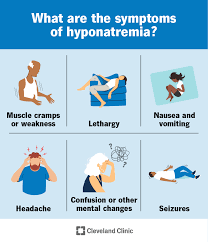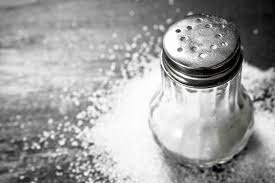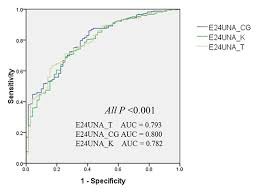Body Fat Percent Charts: Ultimate Guide to 15% Body Fat & Male Fitness Goals
Healthy body composition is very important not just in general wellness but also in maximising fitness, improving athletic performance, and long-term wellness. Body Fat Percent charts (BFP charts) are one of the most effective methods of keeping track of your physical progress because they give you a clear visual image of the percentage of Body Fat Percent charts in proportion to the total body weight. BFP charts provide a more realistic image of your fitness and health compared to other traditional scales that only show the total weight.(see more)
Knowing your Body Fat Percent charts is vital whether you are trying to achieve a slim figure, build muscle, or just want to enhance your overall health. An example of this is that the male with 15 percent body fat can moderate in muscle definition with a few abs visible, whereas the person with 10 percent body fat should have a high level of muscle separation and a low amount of fat beneath the skin. By working with BFP charts together with such tools as the tape measure chart, you can track all the changes in your body composition more accurately and detect even minor changes.
These charts can help even beginners, offering them physical goals to be met in fat loss, muscle maintenance, and body health. Fitness enthusiasts, athletes, and all people concerned with aesthetic aims can visualize how various fat percentages of the body can look. As an example, 15 body fat men may seemingly appear healthier and athletic, and people with higher percentages may see the spots in which fat loss will help to enhance performance and appearance.
Besides tracking, knowing what 10, 15, and 20 percent body fat looks like would be beneficial in setting realistic goals. You will get to know what levels are regarded as healthy, the lowest Body Fat Percent charts ever seen, and how to keep the balance between lean mass and fat in a healthy range. Visual aids such as BFP charts, combined with measurement tools such as the tape measure chart,s can point you in the right direction regarding diet, training, and lifestyle decisions to achieve sustainable outcomes.
After all, Body Fat Percent charts are not numbers, but a guide to making wise decisions. Knowing your body composition, you will be able to track the progress, set feasible goals, and make changes in nutrition, exercise, and lifestyle to achieve the desired physique, a male 15 body fat target, a 10 body fat athletic look, or just achieve the desired overall health.
What Are Body Fat Percent Charts?
Also known as BFP charts, body fat percent charts are a tool used to visually represent the percentage of body fat with respect to the total body mass. In comparison to the weight scales, where only the total weight is checked, the body fat percentage helps to draw the line between lean mass (muscles, bones, organs) and fat.
Key benefits of using BFP charts include:
- Determination of healthy men’s and women’s body fat.
- Monitoring weight loss or weight gain.
- Motivating and visualizing the progress of fitness.
- Prescription of an individualized diet and physical activity.
To illustrate this point, a male who has 15 percent body fat could show muscle definition without looking excessively lean, and someone with 25 percent body fat could have more fat around the abdomen and thighs. BFP charts enable you to have a context for these differences.
Understanding Male Body Fat Percent Charts
Men and women store fat differently, so body fat percent charts often separate genders. Here’s a breakdown of common male body fat ranges:
| Body Fat % | Appearance | Health Considerations | Example |
| 6–9% | Extremely lean, vascular muscles | Low body fat; typically, athletes, bodybuilders | Competitive athlete |
| 10–14% | Lean, visible abs, defined muscle | Healthy, fit male | Male 10 body fat |
| 15–19% | Moderate definition: some fat around the midsection | Healthy, average | Male 15 body fat |
| 20–24% | Soft appearance, minimal muscle definition | Slightly overweight | Typical adult male |
| 25–29% | Noticeable fat, higher health risk | Overweight | Male 25 body fat |
| 30%+ | Obese, higher risk for metabolic disorders | Requires lifestyle changes | Male 30+ body fat |
As an example, 15 body fat men exhibited moderate muscle definition and some visible abs, 10 body fat had pronounced muscle definition and little fat beneath the skin.
Infographic idea: Male Body Fat Percent Chart: Visual Guide between 6 and 30% Percent Fat Guide- A Visual Guide of 6-30 percent fat and muscle content on a human body silhouette.
Female Body Fat Percent charts
Women naturally have higher body fat due to hormonal differences and reproductive needs. A typical female BFP chart may look like this:
| Body Fat % | Appearance | Health Considerations |
| 14–20% | Very lean, athletic | Typical for competitive athletes |
| 21–24% | Fit, toned, healthy | Visible definition, healthy range |
| 25–31% | Average | Healthy but less muscle definition |
| 32–39% | Soft, less muscle definition | Slightly overweight |
| 40%+ | Obese, higher health risk | Requires lifestyle changes |
Fact: Women generally need 10–15% more body fat than men for hormonal health.
How to Measure Body Fat

Several methods help determine your Body Fat Percent charts:
1. Tape Measure Chart
One of the easiest and most available methods of approximating Body Fat Percent charts is to use a tape measure chart. You can readily estimate your BFP without necessarily having an expensive, expensive equipment by measuring the important areas (the waist, hip, neck, and occasionally, thighs). In the case of men, a waist and neck measurement is usually sufficient, whereas a woman will in most cases add hip measures as the most accurate. (see more)
Tape measure charts are also very useful in monitoring trends with time, although they are not as accurate as sophisticated equipment, such as DEXA scans or bioelectrical impedance. As an example, when you compare your monthly measurements with BFP charts, you can see yourself making progress toward specific goals such as 15 percent body fat, 10 body fat, or other goals that are specific to you.
2. Skinfold Calipers
Skinfold callipers record the amount of fat that is under the skin on several body points. It is cheap, fairly precise and is popular among those who work in fitness.
3. Bioelectrical Impedance (BIA)
Another method that is popular in estimating Body Fat Percent charts is the BIA devices (Bioelectrical Impedance Analysis). The method of these devices is to pass a very small and harmless electrical current through your body and measure the ease with which the current passes through various tissues. Since fat does not conduct electricity at the same rate as lean muscle or water, BIA can determine your rate of fat to lean mass.
BIA technology is now commonly found in many home scales, and users can be able to conveniently measure body composition without going to a gym or clinic. It should be noted, though, that it may fluctuate depending on the level of hydration, a recent meal, or even the time of the day. To illustrate this, dehydration can exaggerate body fat, whilst good hydration can underestimate it to a lesser degree.
4. DEXA Scan
DEXA scans have been referred to as the gold standard of body composition analysis as they offer accurate data in terms of fat, lean mass, and bone density.
Hint: Tracking progress in the same way is a good idea. Fusion techniques may result in variation of results.
What Does 10%, 15%, 20% Body Fat Look Like?
The percentage of fat in the body is easy to visualise to set realistic goals:
- 10% Body Fat: Abs are very defined, muscles are separated, and the fat under the skin is minimal. Normal among sports people and gym personalities.
- 15% Body Fat: Lean with prominent abs, average body building. Typical for healthy, fit men.
- 20% Body Fat: The body looks soft, there is little muscle definition, and there is moderate fat around the abdomen.
Comparison table:
| Body Fat % | Abs Visibility | Muscle Definition | Typical Example |
| 10% | Visible | High | Male athlete, fitness model |
| 15% | Partially visible | Moderate | Healthy male, gym-goer |
| 20% | Not visible | Low | Average adult male |
Lowest Body Fat Percentage Ever Recorded
Competitive bodybuilders have been reported to have the lowest body fat percentage ever recorded in a human being at 2-3 percent, in the phase of competition. These radical amounts cannot be maintained and may be harmful because of hormonal and metabolic imbalance. Men are supposed to maintain a body fat of 1015 percent and women of 1825 percent, depending on their activity levels and individual targets.
How to Use Body Fat Percent Charts
Step-by-step approach:
- Measure body fat with the help of a tape measure, graph, calipers, or scale.
- Find your percentage on a BFP chart.
- Compare your body fat with healthy amounts for your age and gender.
- Have realistic targets (e.g. the decrease to 15% in 3-6 months).
- Monitor the progress in the same way of measurement regularly.
Tips for Reducing Body Fat
- Concentrate on a deficit in calories through diet and exercise.
- Put protein as a priority to retain muscle in the process of fat loss.
- Resistance training should also be incorporated to gain lean mass.
- Add cardio and HIIT exercises to lose fat and calories.
- Monitor the progress using BFP and not only weight scales.
Infographic Suggestions
- Male and Female Body Fat Percent charts Visual Guide- silhouettes with the various degrees of fat.
- Tape Measure Chart of Body fat- waist, hip, neck measurements.
- 10%, 15, 20% Body Fat Comparison/side-by-side images of lean, fit and average body types.
Key Facts
- Fact 1: Body fat percentage is a better indicator of health than weight alone.
- Fact 2: Men naturally carry less fat than women due to hormonal differences.
- Fact 3: Extreme low body fat (<6%) is usually unsustainable and risky.
- Fact 4: Using a consistent method for measurement ensures reliable tracking.
Final Thoughts
Body Fat Percent charts (BFP charts) are a priceless source of information on your health, fitness, and body structure. They do not merely display a number on a scale; they make men and women of all ages aware of the proportion of their bodies that is fat versus lean muscle mass. Once individuals interpret BFP charts, they are able to have realistic and attainable goals, be it to get down to 15 percent body fat, aim to get to 10 body fat, or just to have a better body composition that will give them more confidence and health.
By monitoring your improvement using such instruments as a tape measure, chart, or other more complex means, you can see the minute but impactful alterations in the distribution of fat, thus making needed changes in diet, physical activity, and lifestyle habits efficiently. Speaking of which, comparing your present measurements to what 10, 15, and 20 percent body fat represent charts can provide a visual idea of your fitness process and explain what steps can be attained.
You have to keep in mind that Body Fat Percent charts is merely a tool–it must guide your choices but not cause stress and obsession. There are healthy fat levels in both sexes, and women usually have lower percentages of fat compared to men. Knowing this disparity of the BFP charts helps to keep the expectations in check. Sustainable development is achieved through the emphasis on regular nutrition, moderate physical activities, and lifestyle practices that will help to build lean muscle mass and minimize the number of fat.
Even those who want the extremes, such as a male 15 body fat or less, should ensure their health comes first. Although it is an impressive accomplishment to attain the lowest body fat percentage ever, excessively low body fat in the long term is not healthy. BFP charts allow you to achieve a balanced approach to aesthetics, performance, and well-being at the same time.
To sum up, BFP charts should be included in your fitness routine to help you make informed decisions, monitor progress, and live a healthy and sustainable life. With these tips coupled with nutrition, regular exercise, and visual aids, such as tape measure charts, you will be able to attain a slim, fit, and confident body gradually. It is important to remember that body fat percent is a target, not the end product, but rather the means of achieving a healthier, more fi,t and empowered self.
FAQs
When a man has a body fat of 15 percent, he is likely to have moderate ab exposure, visible muscle structure, and an athletic but sustainable body. In women, a body fat of 15% is much leaner and is normally attributed to competitive athletic conditioning. To illustrate these percentages and make realistic appearance and performance goals, it may be useful to use BFP charts.
Yes, 10 body fat is healthy in a man, especially an athlete or a person involved in strength and endurance training. Muscles are well-defined at this level, the veins can be visible, and the body composition is performance-optimal. To the general population, it is necessary to plan to get and keep 10% body fat by proper diet, exercise, and measurement through BFP charts and tape measure charts.
To determine body fat using a tape measure chart, measure the waist, neck, and, in the case of women, the hips. Compare these measurements to standardized BFP charts to estimate your percentage body fat. Another benefit of tracking regularly is that you can track trends, evaluate progress, and modify training or nutrition to achieve goal results such as a male with 15 percent body fat or 10 percent body fat.
Yes. Very low body fat levels- typically lower than 6 percent in men and 14 percent in women- have adverse effects on hormones, immunity, energy, and health in general. Some of them might end up with the lowest percent of body fat ever recorded in their lifetimes, but that is not permanent. BFP charts assist in the detection of safe ranges and avoid excessive restriction.
Men with a 15% body fat tend to be strong, energetic, and lean. The definition of the muscles is not too shredded, and thus, it is a sustainable and realistic goal of health-conscious men. BFP charts and a tape measure chart would help you follow up on your improvement of this healthy balance between aesthetics, performance, and overall wellness.




